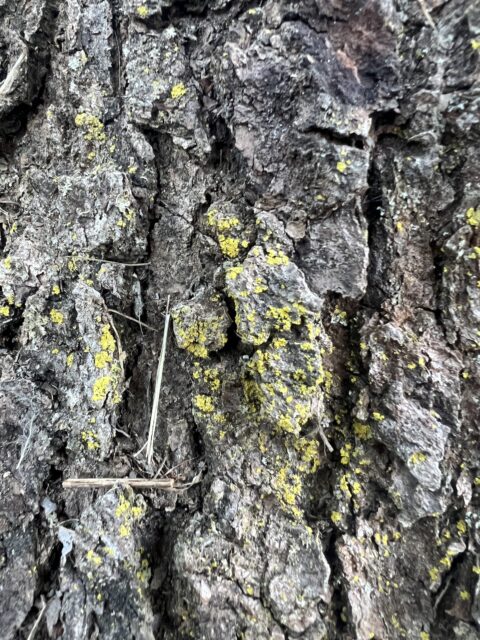Plants of Alum Creek State Park
About the Site
Alum Creek State Park is located in Delaware, Ohio. The park has a fairly large lake (3,387 acres) as well as beech-maple forest which gives a great variety in habitat. Alum Creek is set within fertile agricultural till plains and river valleys. The park has shale cliffs, which were carved out as Alum Creek and other streams flowed through, cutting the bedrock. The beech-maple forest here first grew once the glaciers retreated around 12,000 years ago. The forest today isn’t the original one due to deforestation, but this second-growth forest is preserved. https://ohiodnr.gov/go-and-do/plan-a-visit/find-a-property/alum-creek-state-park
Below is a satellite image showing the areas of the site I recorded plants. The three habitat types I focused on were lakeside, forested, and roadside.
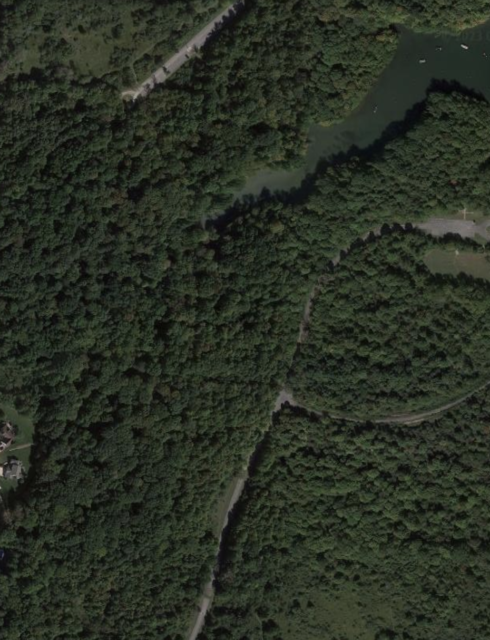
Poison Ivy
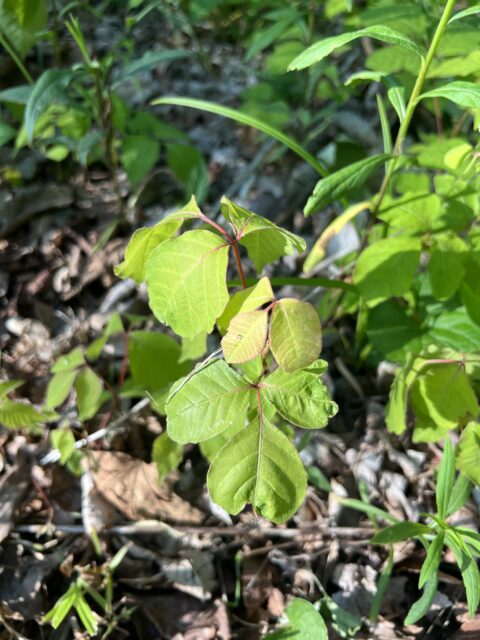
There was a TON of poison ivy at my site. I come here a lot and had never noticed it before, probably because I wasn’t looking for it. Now that I know how much there is I definitely need to be more careful where I’m walking and what I’m touching! The first step to identifying poison ivy is knowing “leaves (leaflets) of three, leave it be!”, this saying is talking about how poison ivy is trifoliolate. Poison ivy often grows as a vine, with rootlets coming off of it to attach it to the tree. The third way you can identify poison ivy are its white berries (drupes)!
Flowers and Inflorescenses
Common Cinquefoil (Potentilla simplex)

Common cinquefoil is a member of the family rosacea. The flowers of this plant have radial symmetry and are 5-merous. The calyx, corolla, and androecium are united into a hypanthium. There are 5 petals, 5 sepals, and an indeterminate number of stamen and pistils. The flower is perigynous with a superior ovary and an apocarpous gynoecium type. I saw this plant in a forested environment at my site. The inflorescence type is solitary. The fruit type is aggregated achenes, similar to strawberries.
Philadelphia Fleabane (Erigeron philadelphicus)

Philadelphia fleabane is a member of the family asteraceae. These flowers have radial symmetry and are 5-merous and sympetalous. The corolla is zygomorphic and fused. The calyx is zygomorphic and modified into a pappus. There are an indeterminate number of ray and disc flowers. The stamen are united by their anthers. The ovary type is epigynous with an inferior ovary. The inflorescence type is a capitulum. The fruit type is achene. I saw this plant along the lakeshore.
Ground Ivy (Glechoma hederacea)
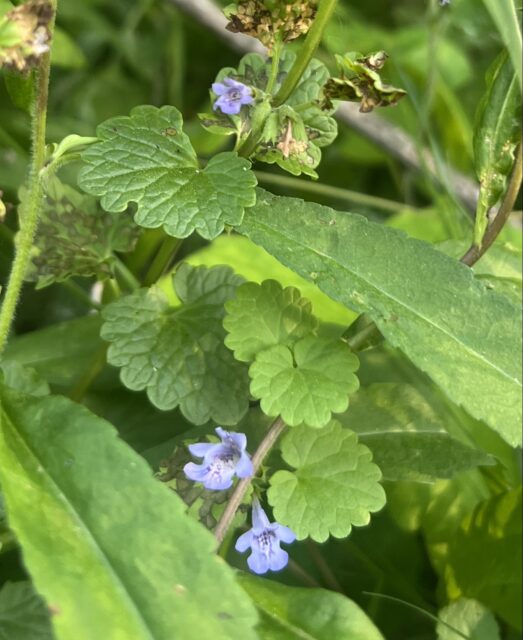
Ground ivy is a member of the family Lamiaceae. These flowers have bilateral symmetry. They have a calyx of 5 fused parts, a zygomorphic corolla of 5 fused parts, and an androecium of 2 stamen. The ovary type is superior and is deeply 4-lobed. The fruit type is 4 nutlets which develop from the ovary lobes. I saw this plant on the side of the road.
Common Yarrow (Achillea millefolium)
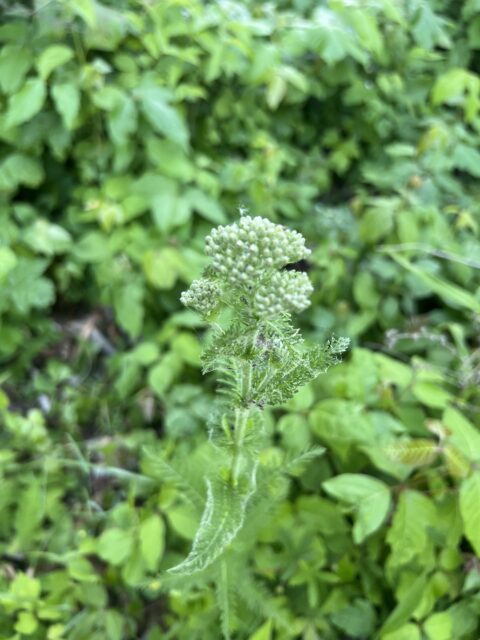
Common Yarrow is a member of the family asteraceae. These flowers have radial symmetry and are 5-merous and sympetalous. The corolla is zygomorphic and fused. The calyx is zygomorphic and modified into a pappus. There are an indeterminate number of ray and disc flowers. The stamen are united by their anthers. The ovary type is epigynous with an inferior ovary. The inflorescence type is a capitulum. The fruit type is achene. I saw this plant in a forested environment.
Invasive Plants
Multiflora Rose (Rosa multiflora)
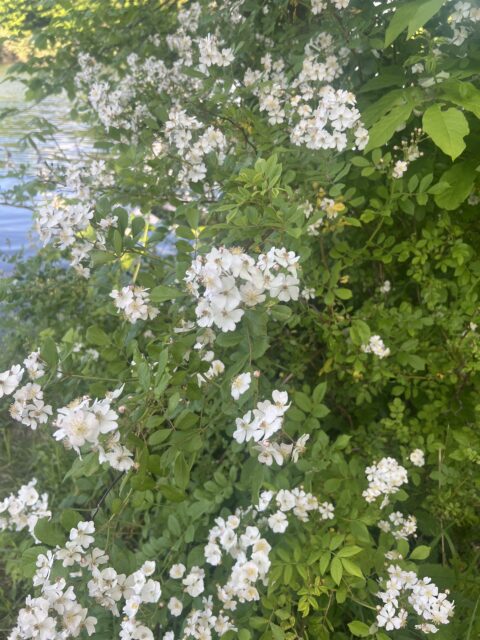
Multiflora rose is native to Eastern Asia and was brought here in the late 1700’s for ornamental purposes, for erosion control, and to act as a living fence due to the dense thickets it forms. It prefers sunny to semi-shaded habitats with well-drained soils, but can tolerate a wide range of habitats including mesic upland and flood plain woods, forest edges, old fields, savannas, prairies, fens, roadsides, fencerows and lawns. It is recommended to control this plant by pulling it up, doing controlled burns, mowing, or spraying with herbicide. A virus called rose rosette can infect and kill them so it is a possibility to introduce this virus to areas where multiflora rose has especially dense and widespread growth. http://www.oipc.info/uploads/5/8/6/5/58652481/8factsheetmultiflorarose.pdf
Amur Honeysuckle (Lonicera maackii)
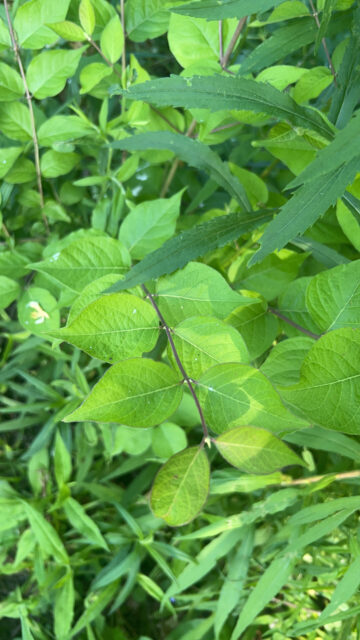
Amur honeysuckle was imported from Eastern Asia to New York in 1898 through the New York Botanical Garden. It was planted for wildlife cover and erosion control. It is tolerant of sun or shade, and has the ability to withstand heat, drought, and severe winter cold. It occurs in disturbed habitats including forest edges, forest interiors, floodplains, old fields, pastures, and roadsides. It is recommended to pull it up or treat it with herbicide to prevent its spread. https://ohiodnr.gov/discover-and-learn/plants-trees/broad-leaf-trees/amur-honeysuckle-lonicera-maackii
Autumn Olive (Elaeagnus umbellata)
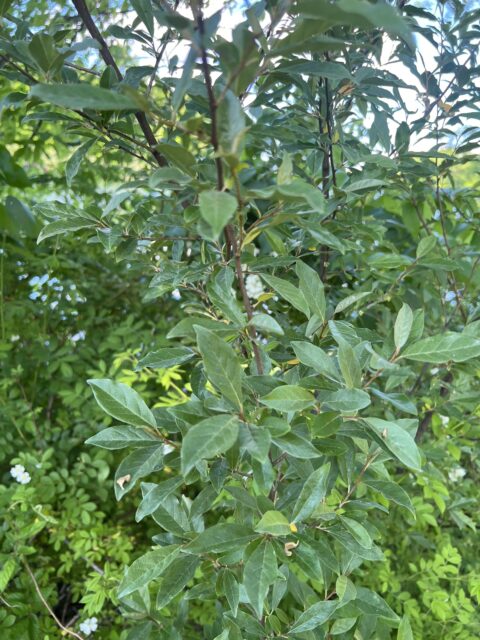
Autumn olive is native to Asia. Autumn olive can grow on sandy, loamy, and coarse-textured soils as well as soils with some clay content. It tolerates a pH range of 4.8-6.5.2 It can grow in partial shade but is more productive in full sun, and intolerant of wet soils. It was first brought to America in the early 1800’s for the purpose of wildlife food and cover, and to reclaim nutrient-poor soils and stabilize coastal areas. It is recommended to physically remove or burn the plant, but this process would need to be repeated. It is also recommended to treat them with herbicides. https://abinvasives.ca/wp-content/uploads/2020/06/FS-Autumn-olive.pdf
Garlic Mustard (Alliaria petiolata)

Garlic mustard is highly invasive and was originally brought over from Europe in the 1800’s for herbal uses and erosion control. When native plants begin to emerge, garlic mustard has occupied a lot of their available space, stealing sunlight, moisture, and nutrients. It is recommended to remove them by pulling them up before they set seed, because the action of yanking the plant from the ground will spread the seed. The ideal habitat for garlic mustard can be in an upland or floodplain forest, savanna, roadside, trail edge, or disturbed area. Garlic mustard is shade tolerant and can be found in open areas. https://www.nature.org/en-us/about-us/where-we-work/united-states/indiana/stories-in-indiana/garlic-mustard/
Woody Plants Fruit Identification/Plants Identifiable to Family
American Beech (Fagus grandifolia)
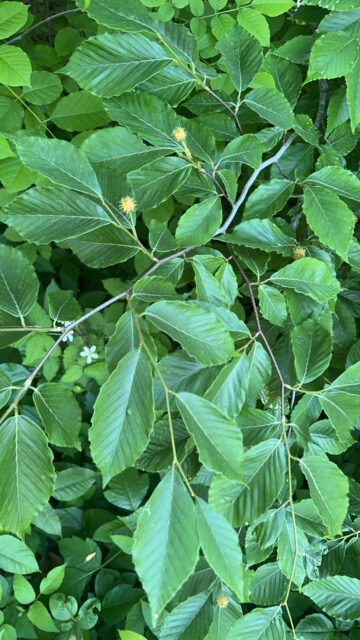
The fruit type of the American beech is a nut. I didn’t find this by fruit alone, so I had a few other factors that led me to identifying it to species. The nuts are triangular shaped and are contained in a spiny husk.
Black Raspberry (Rubus occidentalis)
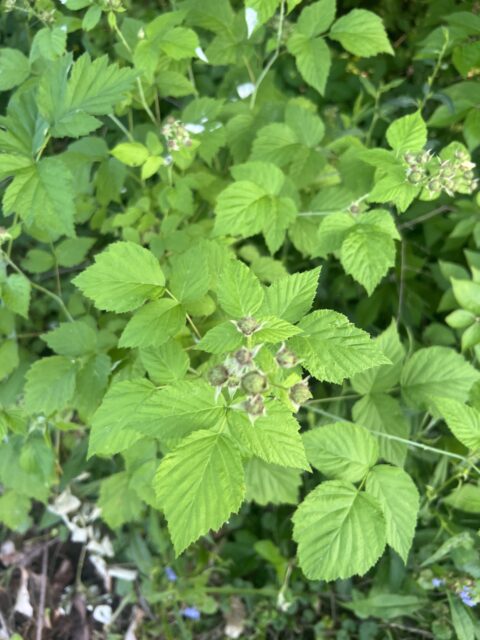
The fruit type of black raspberry is an aggregate of drupelets. The fruits were not present on this particular plant, but you can see where they will be. I identified it through other features such as their alternate, palmately compound leaves and thorny, slightly white-powdered stems.
Wild Strawberry (Fragaria vesca)
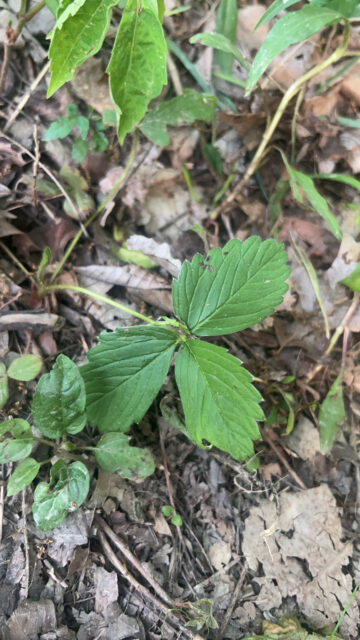
This wild strawberry did not have any fruits at the time, but they are in the funny category of accessory fruits. I had to identify it by its leaves which are basal, coarsely toothed, and compounded in groups of three.
American Elm
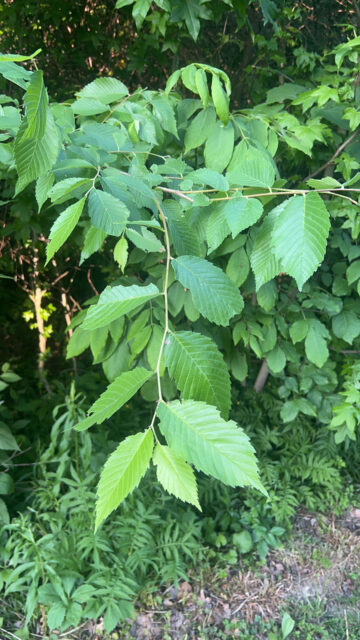
This elm did not have any fruits present on it, but the fruit type is winged samara. The leaves have an unequal base, are in an alternate arrangement, have double-toothed margins, and prominent veins.
Mosses and Lichens
Spoon- Leaved Moss (Bryoandersonia illecebra)
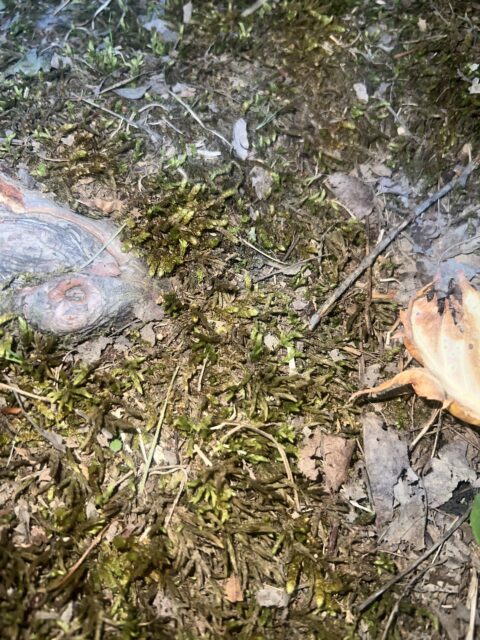
Speckled Shield Lichen (Punctelia perreticulata)
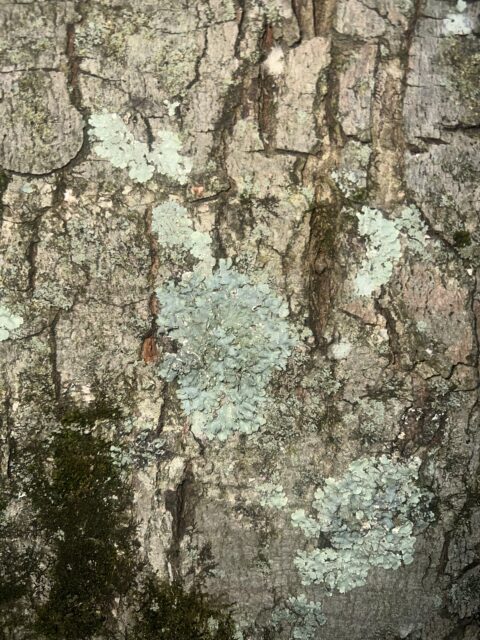
Common Green Shield Lichen (Flavoparmelia caperata)

Lemon Lichen (Candelaria concolor)
